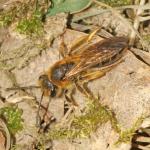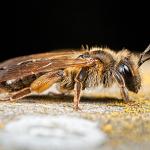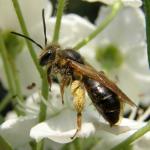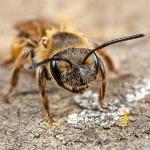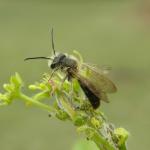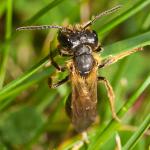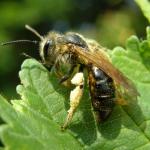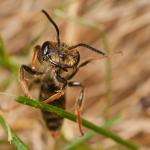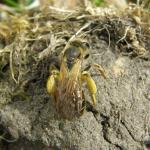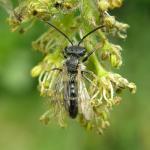Andrena longipes Smith, 1847; Andrena eximia Smith, 1847.
The species is widely distributed in southern England and south Wales, but is generally rare and very local. Sporadic and rare in mainland Europe, with confirmed records from France, Germany, Switzerland, Austria, Italy, Slovenia, former Yugoslavia, Croatia, Slovakia, Czech Republic, Hungary, Romania, Bulgaria and Ukraine.
Listed as RDB3 in Shirt (1987) and as Notable A (now known as Nationally Scarce A) in Falk (1991).
Open deciduous woodland, pastures, calcareous grassland, parkland, disused gravel workings and private gardens.
Univoltine; mid April to late May (exceptionally mid June).
R C L Perkins (1917) was the first to describe the unusual nesting behaviour of this bee. Nests occur in compact aggregations with a single, common entrance. Numerous females enter and leave by this burrow and at times incoming individuals laden with pollen queue on the wing until they can gain access to their nests.The internal architecture of such nest clusters remains unknown but it is assumed each female has her own nest burrow. Nests are commonly excavated in a steep bank or hillock, but bees have been seen flying deep into a rabbit burrow (pers. obs.). In an Oxfordshire site, C O’Toole located 24 such communal nests within a short distance of each other, one having a population of 234 females (O’Toole & Raw, 1991).These nests were found by O’Toole to be perennial, persisting for at least four years. A similar nesting habit has been reported for the closely related Andrena ferox Smith and some A. carantonica Pérez (= A. scotica Perkins). Males have been noted in large numbers coursing along the tops of a maple hedge in Somerset (S P M Roberts, pers. comm.) and a similar situation in south Devon (pers. obs.), whereas in some other sites they tend to occur singly, occasionally settling on sunlit leaves.
In Britain, it is perhaps most often encountered visiting the flowers of hawthorn (Crataegus monogyna), maples (Acer spp.) and sycamore (Acer pseudoplatanus). Males have been noted visiting the flowers of holly (Ilex aquifolium) (Hallett, 1928), dandelion (Taraxacum officinale) and wood spurge (Euphorbia amygdaloides).
The bee Nomada hirtipes Pérez is a cleptoparasite of A. bucephala. Some specimens of Andrena bucephala are stylopized by Stylops aterrimus Newport (Kinzelbach, 1971).
2009


